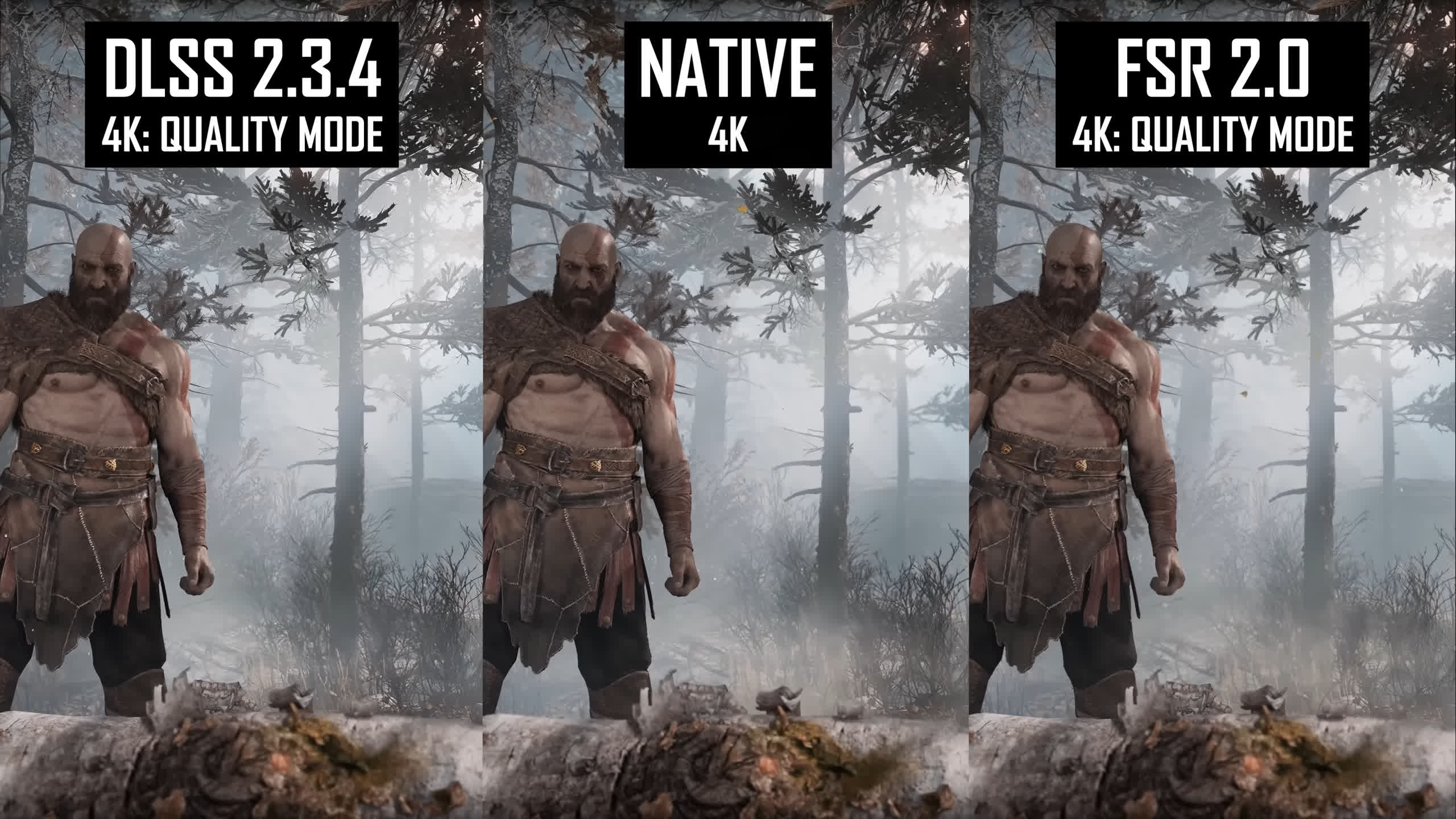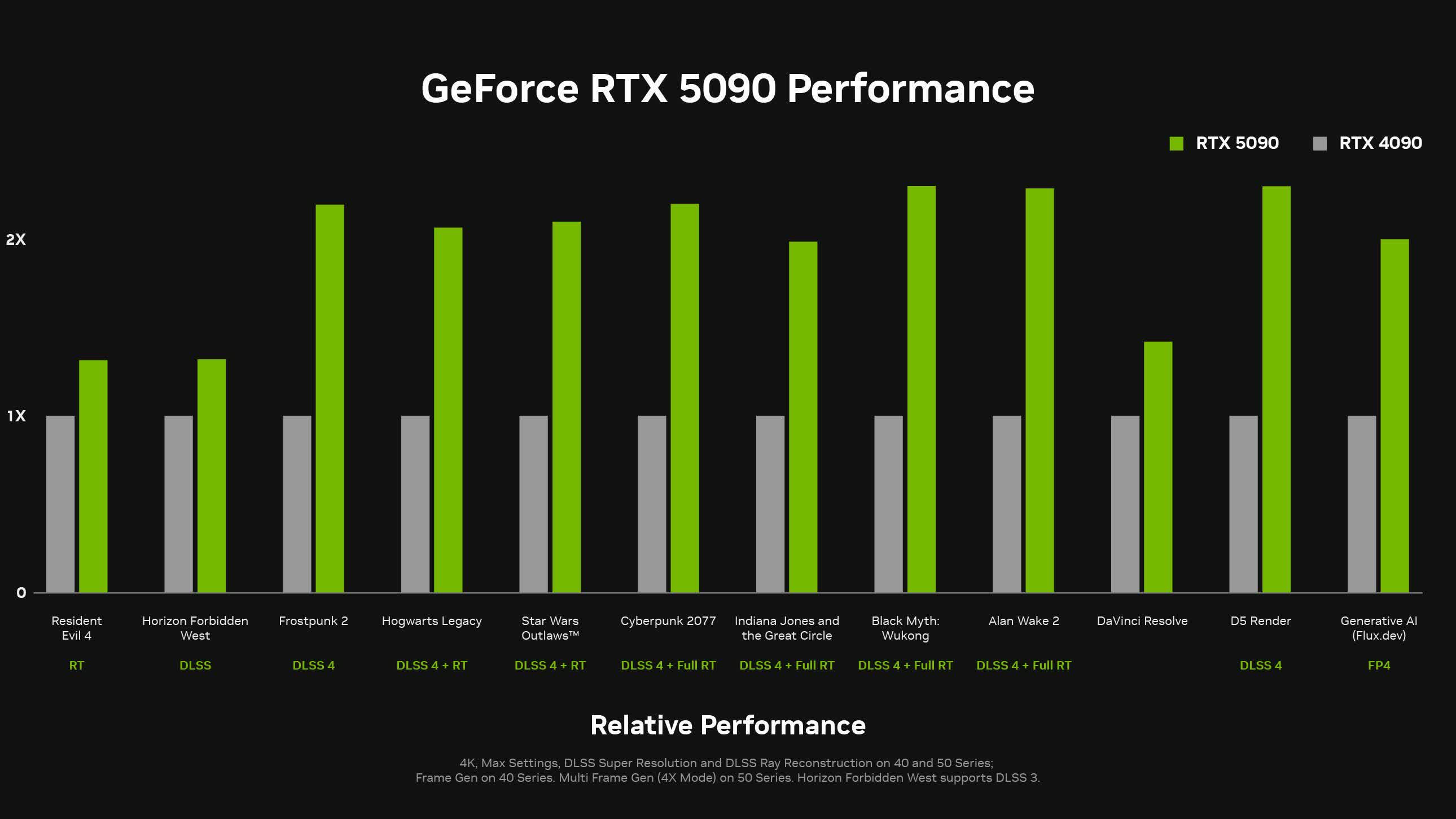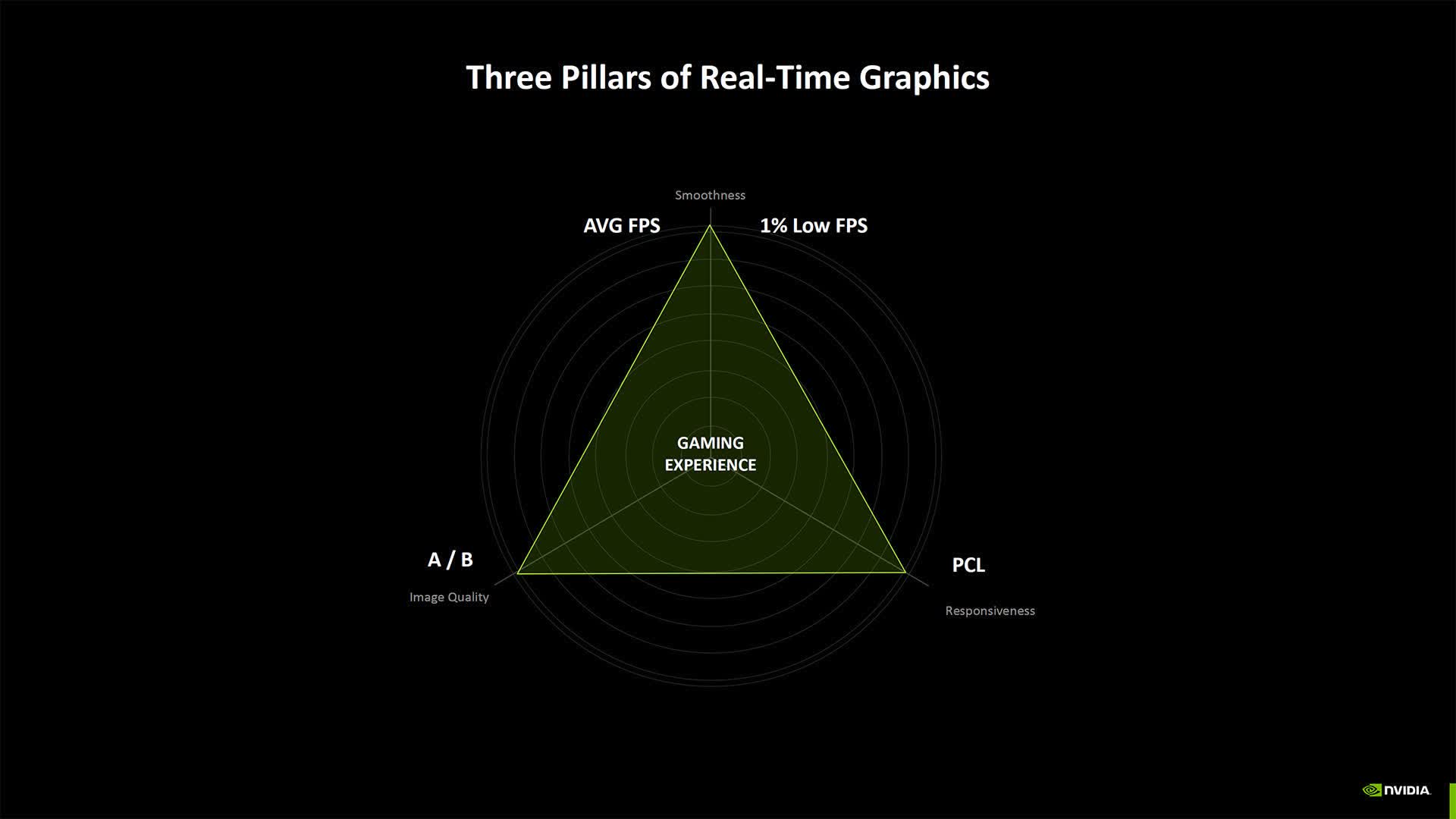In context: PC gaming and graphics card benchmarks have traditionally centered on frame rates. While average frame rates continue to capture attention, emerging factors such as latency, 1% lows, upscaling, and frame generation have made performance analysis increasingly intricate. Nvidia’s RTX 50 series GPUs are set to introduce multi-frame rendering, with Nvidia offering insights on how to properly evaluate its effects.
Following the announcement of its next-generation GPUs and the latest DLSS upscaling advancements at CES 2025, Nvidia is advising media on how to assess upcoming game performance on their new graphics cards. While the company’s presentation naturally highlights the Blackwell cards, the newly introduced multi-frame rendering technology will definitely necessitate fresh analysis methods.
With the introduction of DLSS and AMD’s FSR, benchmarks began incorporating bar charts to reflect the performance benefits of upscaling. This trend has also raised the importance of analyzing image quality.
Frame generation (see our feature: Nvidia DLSS 3: Fake Frames or Big Gains?), which introduces an interpolated frame between each traditionally rendered frame, adds another layer to technical reviews. Assessing image quality comparisons becomes even more critical, and reviews must consider the latency it introduces.
Multi-frame generation complicates matters further by introducing two or three interpolated frames using flip metering technology. According to Nvidia, this new feature, exclusive to RTX 50 series GPUs, is essential for maintaining frame consistency—another pivotal benchmarking element.
Click to enlarge
Tom’s Hardware indicates that, in a CES presentation, the company recommended media outlets transition from using the FrameView tool to MsBetweenDisplayChange for a more accurate measurement of DLSS4, flip metering, and frame rate variability.
As technical reviews roll out in the upcoming weeks following the late January release of the first RTX Blackwell cards, making fair comparisons of their frame generation results against AMD GPUs could pose challenges, given that FSR 3 produces only one interpolated frame for each rendered one.
A game running at 240fps with AI-generated frames might appear smoother than the same game running at 120fps with fewer interpolated frames, or at 60fps with solely rendered frames, although all these scenarios might feel distinctly different.
Eurogamer’s preliminary assessment of Cyberpunk 2077 using DLSS 4 revealed that multi-frame rendering adds minimal latency and visual artifacts, though it remains uncertain if similar outcomes will be seen across other games.
In the wake of CES, Nvidia has released further details about DLSS 4 and how each 50 series card compares to its direct predecessor. Most charts utilize multi-frame generation to demonstrate performance improvements ranging from 200 to 400 percent. However, games like Resident Evil 4 Remake and Horizon Forbidden West, which haven’t been updated to support multi-frame rendering, display more modest (and realistic) raw performance enhancements of 15 to 30 percent.


